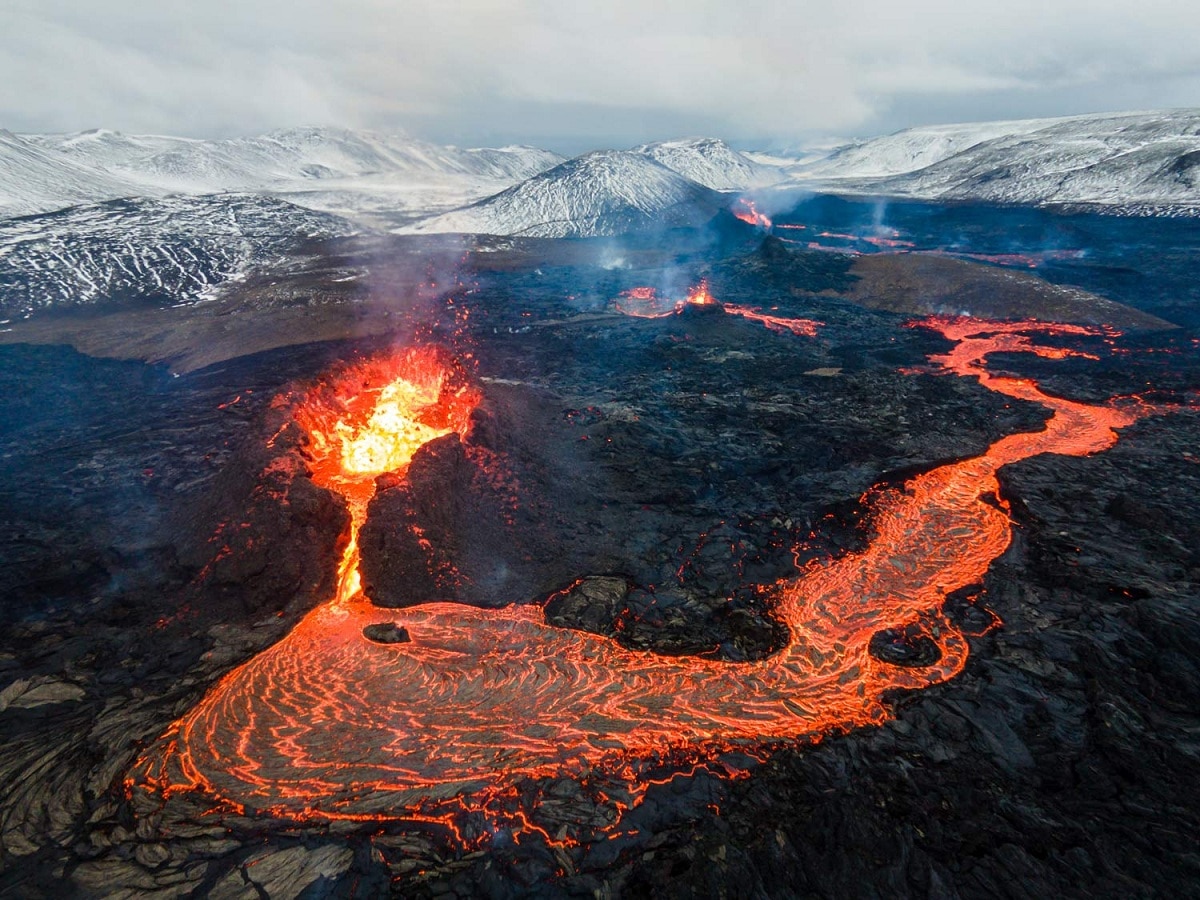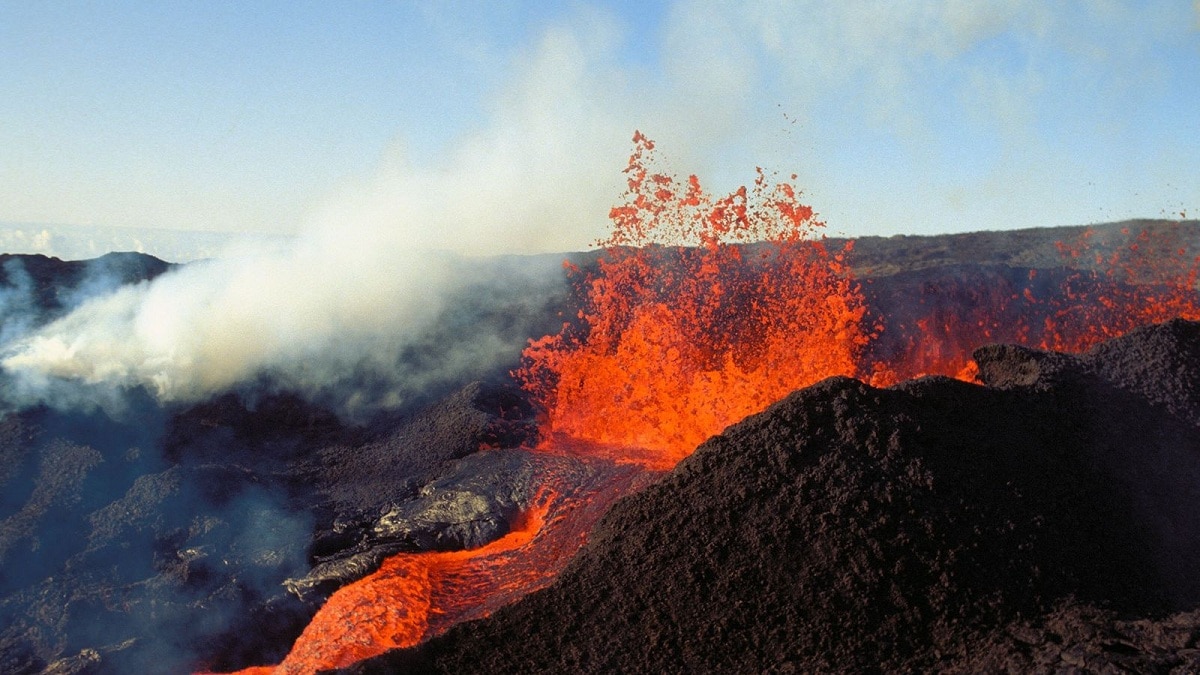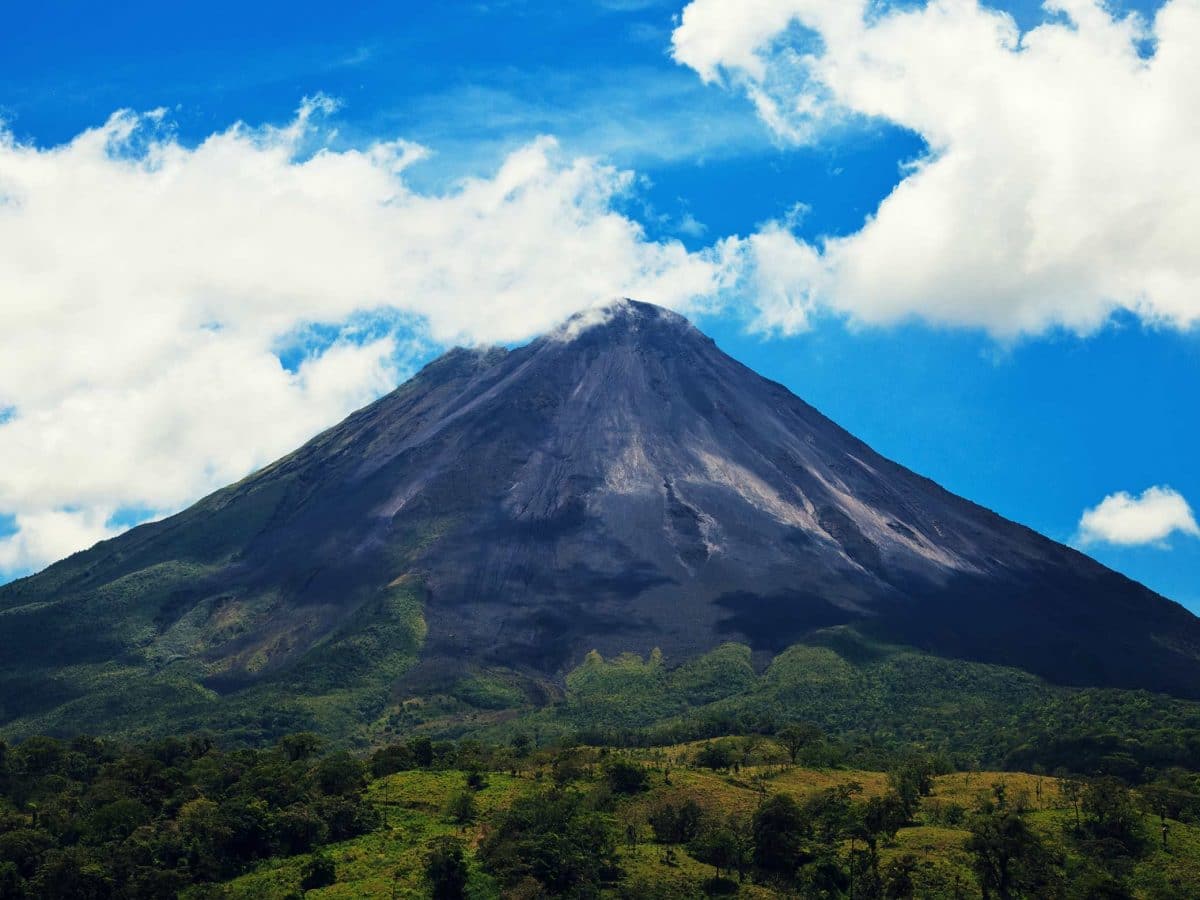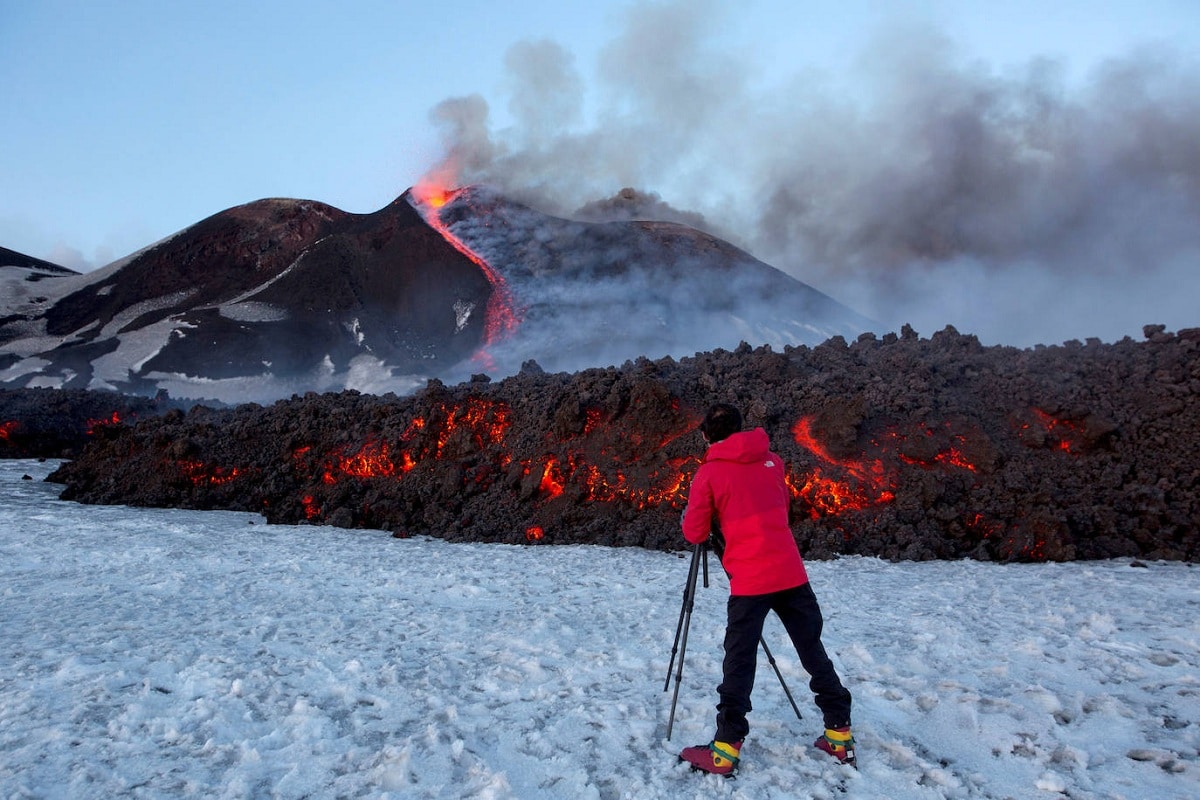
Typically, there are around 20 active volcanoes erupting on any given day at any time around the world. This means that the new elections are not extraordinary events as it may seem to us. As with storms, more than 1000 lightning strikes fall at the end of the day. The largest volcanoes in the world They are those whose eruptions and size are greater.
In this article we are going to focus on telling you what are the characteristics of the largest volcanoes in the world.
Largest volcanoes in the world

According to the Smithsonian Global Volcanology Program, there are approximately 1356 active volcanoes worldwide, which means that active volcanoes are those that are currently erupting, show signs of activity (such as earthquakes or large gas emissions) or have experienced erupting volcanoes, that is, in the last 10.000 years.
There are all kinds of volcanoes, more or less explosive eruptions, whose destructive power depends on many factors. There are volcanoes on the ground, there are several craters, aquatic, and the geological composition is very diverse, but what is the largest volcano in the world?
Nevados Ojos del Salado Volcano
Located on the border of Chile and Argentina, Nevados Ojos del Salado is the highest volcano in the world, but it rises only 2.000 meters above its base. It rises to 6.879 meters along the Andes.
Its last recorded activity was on November 14, 1993, when an intermittent gray column of water vapor and solphataric gas was observed for three hours. On November 16, observers from the Livestock Agricultural Service and the Maricunga Regional Police Station, 30 kilometers from the volcano, observed similar but less intense pillars.
Mauna Loa Volcano

The summit of the shield volcano Mauna Loa is 2.700 meters lower than the Ojos del Salado in Nevada, but it is almost 10 times higher than the Andes because it rises almost 9 kilometers above the seabed. In this way, it is considered by many to be the largest active volcano in the world. Its summit is cut by the Mokuaweo crater, the oldest and largest 6 x 8 km crater.
It is not only a volcano considered large but also high. Although there are other volcanoes that also belong to this same network of volcanoes that exist around the Hawaiian Islands, this is one of the largest. Above sea level it has an altitude of approximately 4170 meters. These dimensions together with the surface and width make a total volume of about 80.000 cubic kilometers. For this reason, it is the largest volcano on Earth in terms of width and volume.
It is famous for being a shield-type volcano that has unique characteristics. It has continuous higher flows that have been emanating from the ancient volcanic eruptions. It is a volcano considered one of the most active on Earth. Since its formation, it has had almost continuous volcanic eruptions, although not too powerful. Basically it is made up of taller ones and has the basis of that activity and its proximity in human populations. This means that it is included in the Volcanoes of the Decade project, which makes it the subject of continuous research. Thanks to these investigations, there is a great deal of information about it.
Etna
Mount Etna, located in Catania, the second largest city in Sicily, Italy, is the highest volcano in continental Europe. Its height is about 3.357 meters, and according to the Italian National Institute of Geophysics and Volcanology (INGV), successive eruptions in recent years have raised their peak 33 meters in a short period of time.
After a 20-day hiatus, Mount Etna erupted again on Tuesday, September 21. The volcano is run by the Smithsonian's Global Volcanology Program, one of the most notorious volcanoes in the world, known for its frequent volcanic activity, multiple massive eruptions, and the large amount of lava it normally spews out.
At an altitude of more than 3.300 meters, It is the highest and widest aerial volcano on the European continent, the highest mountain in the Mediterranean basin and the highest mountain in Italy south of the Alps. It overlooks the Ionian Sea to the east, the Simito River to the west and south, and the Alcantara River to the north.
The volcano covers an area of about 1.600 square kilometers, has a diameter of about 35 kilometers from north to south, a circumference of about 200 kilometers, and a volume of about 500 square kilometers.
From sea level to the top of the mountain, the scenery and habitat changes are astonishing, along with its rich natural wonders. All this makes this place unique for hikers, photographers, naturalists, volcanologists, spiritual freedom, and nature lovers of earth and paradise. Eastern Sicily displays a wide variety of landscapes, but from a geological point of view, it also offers incredible diversity.
Largest volcanoes in the world: supervolcanoes

A supervolcano is a type of volcano whose magma chamber is a thousand times larger than a conventional volcano and therefore can produce the largest and most destructive eruptions on Earth.
Unlike traditional volcanoes, they are clearly not mountains, but underground magma deposits, with only a huge crater-shaped depression visible on the surface.
There have been some fifty volcanic supereruptions in the history of our planet, affecting large geographic areas. Such was the case with Mount Tuba, which erupted in Sumatra 74.000 years ago, spewing 2.800 cubic kilometers of lava. However, this is not the last, as the most recent occurred in New Zealand around 26,000 years ago.
Perhaps one of the best known is the Yellowstone supervolcano, in the United States, whose caldera was formed 640.000 years ago causing ash columns up to 30.000 meters high that covered the Gulf of Mexico with dust.
I hope that with this information you can learn more about the largest volcanoes in the world and their characteristics.